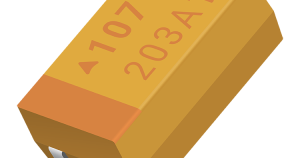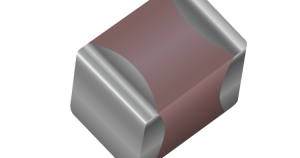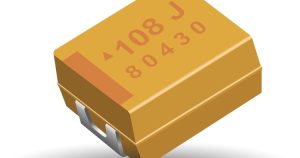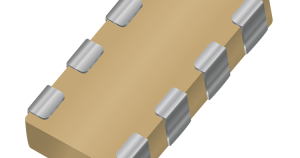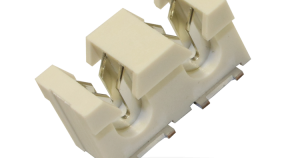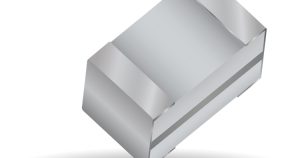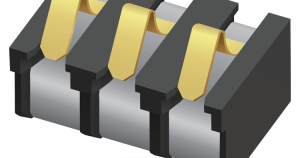Glossary Of Terms Used in the Tantalum Industry Written By: John Gill Abstract: Terms used in the tantalum industry can often be confusing to the layperson. The purpose of this paper is to allow someone to look up any terms of which he or she is unsure. It is directed at the reader of technical literature in particular.
Learn More →Technical Articles / Whitepapers
Reliability and Characterization of MLCC Decoupling Capacitors With C4 Interconnections Written By: Donald Scheider | Donald Hopkins | Paul Zucco | Edward Moszczynski | Michael Griffin | Mark Takacs IBM Microelectronics Division Hudson Valley Research Park 1580 Rte. 52, Hopewell Jct., NY 12533 John Galvagni AVX Corporation 2200 AVX Drive Myrtle Beach, SC 29577 Abstract: Multilayer ceramic (MLC) capacitors are composite structures made of alternating layers of ceramic (dielectric material) and metal (electrodes). The dielectric material is barium titanate-based ceramic and the electrodes are made of platinum. C4 (controlled collapse chip connections) technology [1] is used to provide multiple attachment points to substrates. A high dielectric constant of barium titanatebased ceramic helps to achieve a large capacitance/size ratio. The capacitance
Learn More →Parameters Important For Surface Mount Applications Of Multilayer Ceramic Capacitors Written By: Bharat S. Rawal | Kumar Krishnamani | John Maxwell Abstract: With increasing use of multilayer ceramic capacitors (MLCs) in surface mount technology (SMT), the understanding of the mechanical properties and thermal stress resistance parameters of MLCs is essential for zero defect soldering and sub ppm failure rates. In this paper, various aspects of SMT including zero defect design, placement considerations, soldering techniques, thermal stress resistance parameters, and post solder handling are reviewed. Special emphasis is given to parameters responsible for thermal shock behavior of MLCs with review of the effect of overall component thickness, temperature gradients, and terminations of MLCs.
Learn More →Multilayer Ceramic Capacitors Materials and Manufacture Written By: Manfred Kahn Abstract: The economical mass production of highquality, reliable and low-cost multilayer ceramic (MLC) capacitors requires a thorough understanding of the characteristics of the materials used, a knowledge of chemistry and electronics, as well as a high level of expertise in mechanical-equipment design and in-process technology.
Learn More →Low-Voltage Performance of Multilayer Ceramic Capacitors Written By: N. H. Chan and B. S. Rawal Abstract: Extensive experiments and detailed analyses of the performance of multilayer ceramic capacitors used for decoupling and in other low-voltage, low-impedance applications discloses no degradation of insulation resistance in components without physical flaws. Capacitors with physical flaws show similar loss of performance at both low and high voltages.
Learn More →Cracks: The Hidden Defect Written By: John Maxwell Abstract: Cracks in ceramic chip capacitors can be introduced at any process step during surface mount assembly. Thermal shock has become a “pat” answer for all of these cracks, but about 75 to 80% originate from other sources. These sources include pick and place machine centering jaws, vacuum pick up bit, board depanelization, unwarping boards after soldering, test fixtures, connector insulation, final assembly, as well as defective components. Each source has a unique signature in the type of crack that it develops so that each can be identified as the source of error.
Learn More →Equivalent Series Resistance of Tantalum Capacitors Written By: R.W. Franklin Abstract: The resistive losses which occur with all practical forms of capacitor are made up from several different mechanisms, including resistance in components and contacts, viscous forces within the dielectric and defects producing bypassing current paths. To express the effect of these various factors on the behavior of an electrolytic capacitor they are lumped together as one term, the equivalent series resistance (ESR).
Learn More →Conduction and Failure Mechanisms in Barium Titanate Based Ceramics Under Highly Accelerated Conditions Written By: B. S. Rawal and N. H. Chan Abstract: Various mid-K and high-K barium titanate based laboratory compositions were studied to understand the conduction and failure mechanisms in multilayer ceramic capacitors (MLCs). These studies were utilized to establish the failure modes, the cause of failures, and determine the voltage and temperature acceleration factors. Current voltage plots were evaluated to study the endurance of the various ceramics under stress. These observations were employed to develop test conditions to screen commercial parts with one to two orders of magnitude lower failure rates and study production processes and types of ceramic materials to further improve the reliability of MLCs
Learn More →Surface Mount Ceramic Resonators Written By: Phil Elliott Abstract: Ceramic resonators provide an attractive alternative to quartz crystals for oscillation frequency stabilization in many applications. Their low cost, mechanical ruggedness and small size often outweigh the reduced precision to which frequencies can be controlled, when compared to quartz devices. Ceramic resonators are now available in surface mountable packages suitable for automated production processes.
Learn More →Comparison of Multilayer Ceramic and Tantalum Capacitors Written By: Jeffrey Cain, Ph.D. Abstract: Engineers now have a choice between ceramic and tantalum when it comes to selecting capacitors with values between 0.1 – 22µF. As the ceramic material technology continues to advance, more and more capacitance is realized in the same case sizes compared to previous years. This paper will examine what devices are available and the trade off of using each of the technologies. The goal of this work is to help in selecting the proper device (tantalum versus ceramic) for a specific application.
Learn More →Capacitor Array — An Integrated Passive Component Offering Benefits to the Automotive Sector Written By: Mark Stewart Abstract: By combining discrete capacitors into a multi-element package, AEC-Q qualified capacitor arrays offer automotive designers the opportunity to lower placement costs, increase assembly line output through lower component count per board and reduce real estate requirements.
Learn More →The 3 Rs of IDCs: Reliability, Repeatability, Reparability Written By: Tom Anderson Abstract: Even after more than 50 years in the marketplace, insulation displacement connectors (IDCs) continue to prove themselves in new and demanding applications, such as automotive safety systems, solid-state lighting (SSL), and industrial sensors and controls. IDCs have provided a cost-effective and reliable alternative to crimp-to-wire and hard-soldering wires to a PCB.
Learn More →Wireless Charging Written By: Ron Demcko Abstract: Yesterday’s dream of distributing power wirelessly is becoming a reality based upon exceptional efforts of industry regulatory agencies, component manufacturers, and design engineers with long-term vision. The use of wireless charging is expected to increase dramatically as consumers are freed from carrying bulky cables that have extra weight and the potential to wear out the mechanisms associated with them. Implementation of wireless charging schemes are easier than ever thanks to a wide availability of dedicated chip sets. Within the topic of wireless charging – there are several different power levels, architectures, and design approaches associated with wireless power transfer. This paper will serve as a starting point and describe the families of capacitors
Learn More →Optimizing Antenna Performance Through the Use of High Q, Tight Tolerance Capacitors Written By: Ron Demcko Abstract: Antenna matching is an important aspect of any RF system. Thinking in traditional terms, a properly designed and matched antenna increases the operating distance of the wireless product. Well matched antennas can transmit more power from the radio – therefore transmit over longer distances. Likewise, a well matched antenna allows the maximum transfer of energy from the receiving antenna to the receiver front end. Thus, allowing better receive characteristics for the system. But the use of a capacitor can also have a big impact upon the physical size of an antenna. If the goal is a compact, integrated antenna, the use of a
Learn More →Portable Electronics Require Smaller, More Modular SMT Battery Connectors Written By: Tom Anderson Abstract: Next-generation battery connectors face many new market demands, although the common ingredients remain the same: high life cycle, stability, simple design, and SMT compatibility.
Learn More →Temperature Stability Assessment of GaN Power Amplifiers with Matching Tantalum Capacitors Written By: T.Zednicek | R.Demcko | M.Weaver | D.West | T. Blecha | F.Steiner | J.Svarny | R.Linhart Abstract: Wide band gap GaN and SiC devices are expected to experience high levels of growth in applications ranging from power conversion to RF transistors and MMICs. End users recognize the advantages of GaN technology as an ability to operate under higher currents and voltages. RF GaN market is expected to grow at 22.9 % CAGR over 2017-2023, boosted by implementation of 5G networks. [1] During the past years, the wide band semiconductors have reported achievement of >1000 V BDV that opens new challenges for high power industrial applications such as
Learn More →